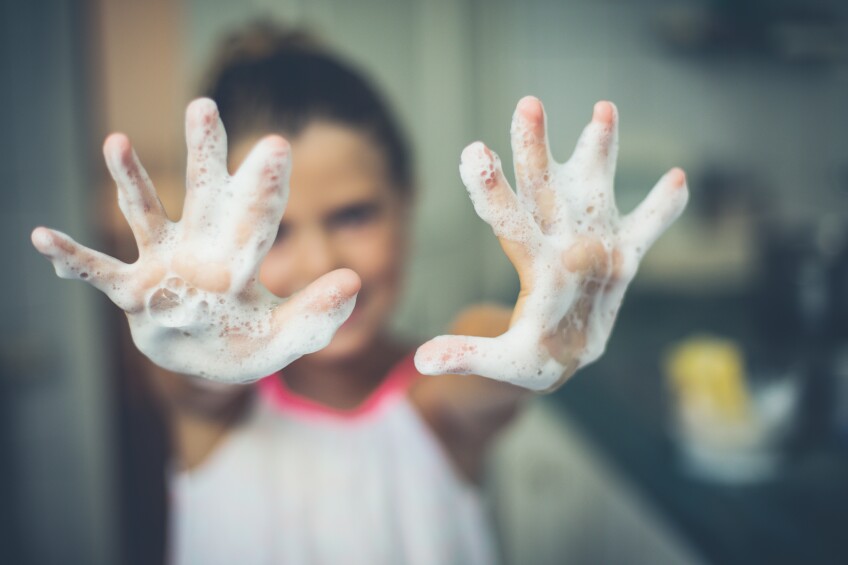How to Help Kids Avoid Common Ailments and Illnesses

My son started preschool in October 2019, coming from a home daycare with a small group of kids.
That winter of 2019, into January and February 2020, was bleak. He had constant colds and coughs. When I listen now to videos of him at the time, it always sounds like he had a frog in his throat, and the humidifier was pretty much always in use. On top of that, he also had bouts of pink eye, hand foot mouth disease and at least three high fevers. Somehow, he at least avoided the croup and scabies outbreaks in his classroom.
The rest of the family suffered, too. My husband and I had colds regularly; I had the flu, and my husband had a fever and cough that never seemed to go away.
Then March 2020 came, and my son’s school closed due to the COVID-19 pandemic. All of us weren’t sick again through the rest of the fall and summer.
When his school reopened in August, it had several new strict precautions in place: smaller classes, fewer teachers rotating through the class, temperature checks and health screenings, a strict no-illness policy and the kids and teachers wore masks.
We decided to send him back to school and braced ourselves, hopefully not for COVID-19, but for all the illnesses that came last winter.
But they never came.
My son had a cold for a few days and stayed home for five days until his symptoms cleared, and he had a negative COVID-19 test. The rest of his classmates did the same. Hardly anyone got sick with anything, even a cold.
Colds are annoying, but they are to be expected, especially when having socialization between kids, and that level of socialization is what they need to appropriately develop.Corinne McDaniels-Davidson, director of the Institute for Public Health at San Diego State University.
Our experience has been common during the pandemic. All of the hand-washing, mask-wearing and social distancing has meant many people have been able to avoid COVID-19, as well as and lesser illnesses like colds and cases of flu. And that has left many parents, myself included, wondering how they can continue to avoid illnesses in the future.
It turns out the same precautions that protect us against COVID-19 also protect us from cases of flu and colds, not to mention things like pink eye, says Corinne McDaniels-Davidson, the director of the Institute for Public Health at San Diego State University.
“For colds and flu, they are spread by droplets from sneezing and coughing, and touching surfaces, and the distance we need to maintain to avoid that spread is more about 3 feet,” she says. “That’s why there hasn’t been a lot of colds and flu this year, because we’ve been going farther than that for COVID.”
However, she thinks that post-COVID, we should expect normal colds to return.
“Colds are annoying, but they are to be expected, especially when having socialization between kids, and that level of socialization is what they need to appropriately develop,” she says. “Kids are touchy-feely, they need to have that touch, and we wouldn’t want to limit that.”

But, she said, there is some avoidable exposure. For that, she recommends the following:
- Make sure your kids’ school has a strict illness policy and follows it in the future
- Don’t send your kids to school sick
- Don’t go to work if you are sick
- Ask friends about whether their kids or anyone in the family is sick before a playdate
- Keep washing hands and enforcing your kids washing hands regularly
- Continue wearing masks in public places
Post COVID, masks are a tricky issue, McDaniels-Davidson says, because they may hinder kids’ development. She thinks there’s a balance — kids could use them sometimes during school, but not all the time.
As for her own family, she plans to continue wearing them when they go to the doctor’s office. And, she said, they’ll continue to be aware of how many people are in a crowded room and how much air they share with them.
It’s also important to remember that COVID-19 will likely be around in some form long into the future, even with the vaccines. Dr. Alessandro Sette, an immunologist at La Jolla Institute for Immunology, says it’s possible that even if we’re vaccinated, we could get COVID-19 in the future and hopefully just not get very sick from it.
That would make it like another form of the common cold, he says.
So if we continue to protect ourselves against COVID-19, we’ll also be avoiding other common colds and the flu, which are all respiratory viruses and are spread by the same means: Breathing in particles that are spread by droplets in the air or in sneezes and coughs.
“But even though respiratory viruses are spread in the same way, they may be different in different environments,” he says. “Some viruses may replicate in different amounts, so as a result how many particles are necessary to become infected may be different from one virus to the next, and so what is effective for one virus is not necessarily true from one virus to the next.”
The best protection is to get kids the COVID-19 vaccine as soon as it’s available (and boosters for adults and older kids), as well as taking the other usual precautions.


